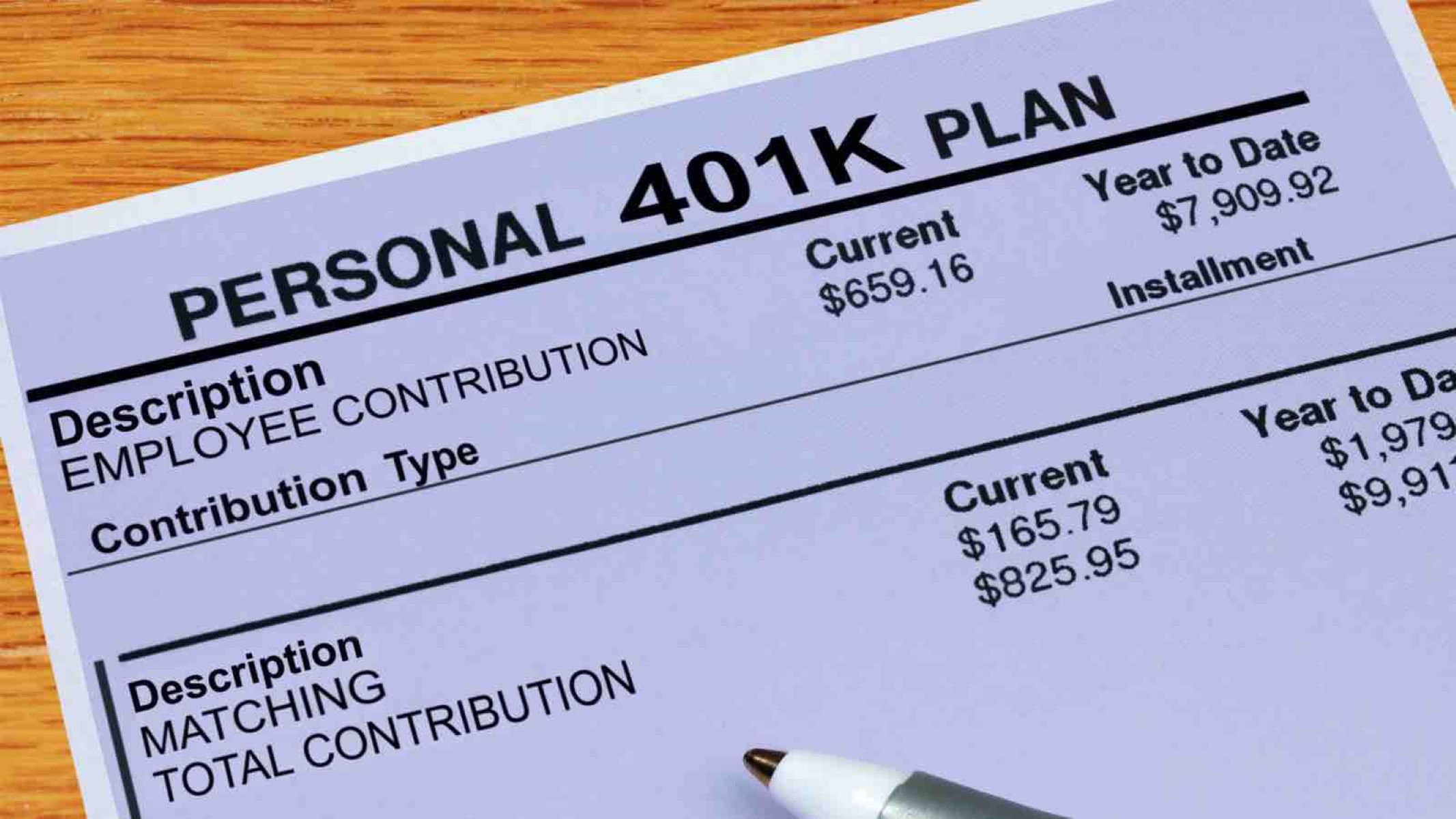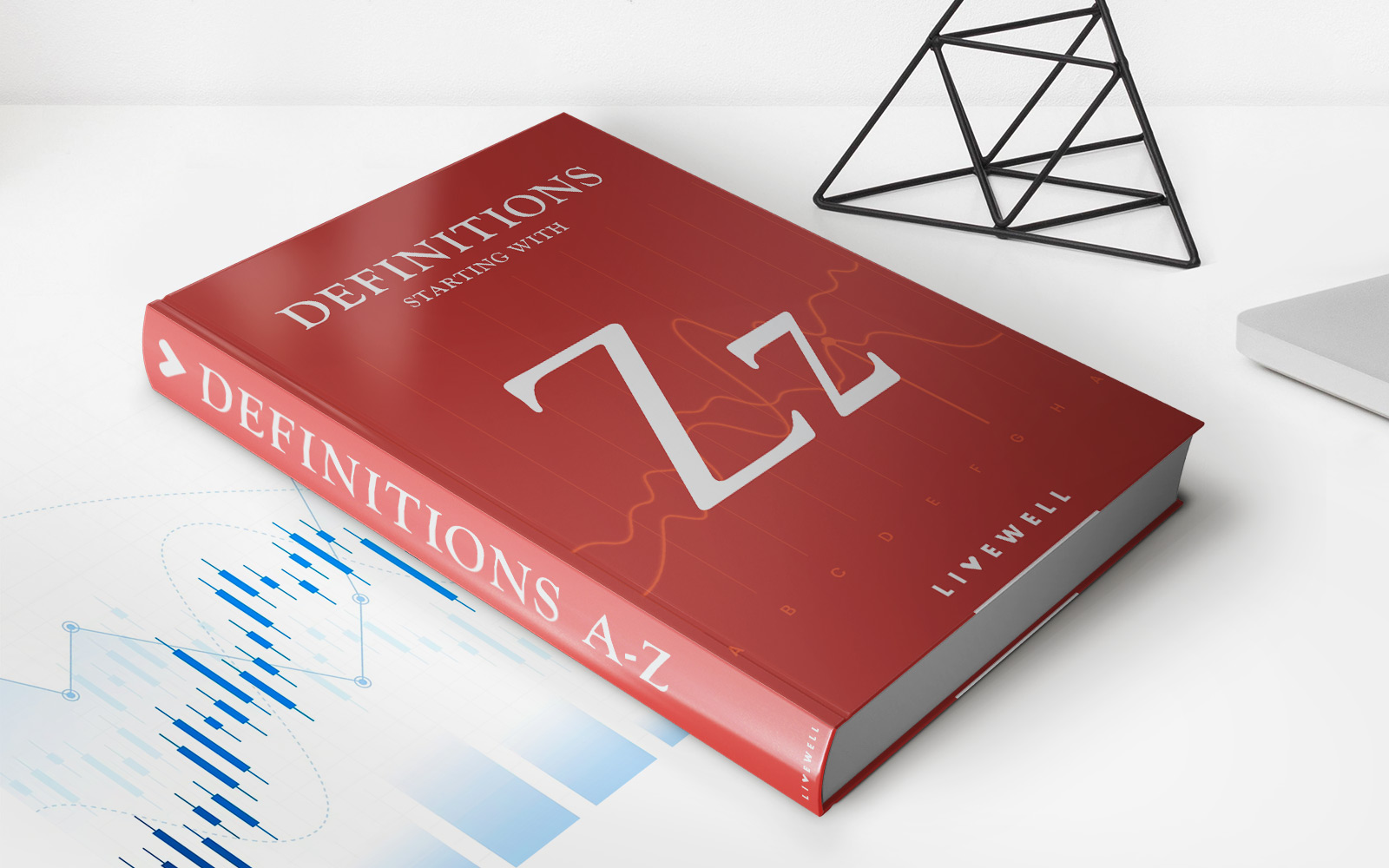Home>Finance>How To Calculate Roth 401K Contribution On Paycheck


Finance
How To Calculate Roth 401K Contribution On Paycheck
Published: October 18, 2023
Learn how to calculate your Roth 401K contribution on your paycheck and manage your finances effectively. Start planning for your financial future today!
(Many of the links in this article redirect to a specific reviewed product. Your purchase of these products through affiliate links helps to generate commission for LiveWell, at no extra cost. Learn more)
Table of Contents
- Introduction
- Understanding Roth 401(k) Contributions
- Importance of Calculating Roth 401(k) Contributions on Paycheck
- Determining Your Roth 401(k) Contribution Percentage
- Step-by-Step Guide to Calculating Roth 401(k) Contribution on Paycheck
- Factors Affecting Roth 401(k) Contribution Calculation
- Benefits of Maximizing Roth 401(k) Contributions
- Potential Drawbacks of Roth 401(k) Contributions
- Strategies for Optimizing Roth 401(k) Contributions
- Conclusion
Introduction
Planning for retirement is an essential part of financial stability and peace of mind. One popular retirement savings option is the Roth 401(k), which combines features of both a traditional 401(k) and a Roth IRA. Unlike a traditional 401(k) where contributions are made pre-tax, Roth 401(k) contributions are made with after-tax money, allowing for tax-free withdrawals in retirement.
Calculating your Roth 401(k) contributions on your paycheck is crucial for effective retirement planning. It helps ensure that you are maximizing your contributions while also managing your current financial obligations. By understanding how to calculate your Roth 401(k) contributions, you can make informed decisions about your retirement savings and ensure that you are on track to meet your long-term financial goals.
In this article, we will explore the importance of calculating your Roth 401(k) contribution on your paycheck, the process of determining your contribution percentage, and the factors that can impact this calculation. We will also discuss the benefits of maximizing your Roth 401(k) contributions and strategies for optimizing your contributions.
Whether you are just starting your career or are well into your retirement planning journey, understanding how to calculate your Roth 401(k) contributions is essential. So let’s dive in and explore the world of Roth 401(k) contributions on your paycheck!
Understanding Roth 401(k) Contributions
Before diving into the calculation process, it’s important to have a good understanding of what Roth 401(k) contributions actually are. A Roth 401(k) combines the benefits of a traditional 401(k) and a Roth IRA. It allows you to contribute a portion of your pre-tax income to a retirement account, which then grows tax-free over time.
Unlike a traditional 401(k), where contributions are made with pre-tax dollars, Roth 401(k) contributions are made with after-tax dollars. This means that the money you contribute has already been taxed, so you won’t owe any taxes on your withdrawals in retirement, including any investment gains.
One of the key advantages of Roth 401(k) contributions is the potential for tax-free growth. Since your contributions are made with after-tax dollars, any earnings or investment gains within the account are not subject to income tax. This can result in significant tax savings when it comes time to withdraw your funds in retirement.
Another benefit of Roth 401(k) contributions is the flexibility they offer. While traditional 401(k) contributions are subject to required minimum distributions (RMDs) starting at age 72, Roth 401(k) contributions do not have RMDs. This means you can continue to let your money grow tax-free for as long as you like, providing you with more control over your retirement savings.
However, it’s important to note that there are annual contribution limits for Roth 401(k) contributions. For 2021, the limit is $19,500, or $26,000 for those aged 50 and older. It’s crucial to be aware of these limits and ensure that you are not exceeding them to avoid any tax implications.
Now that we have a basic understanding of Roth 401(k) contributions, let’s explore why it’s important to calculate these contributions on your paycheck.
Importance of Calculating Roth 401(k) Contributions on Paycheck
Calculating your Roth 401(k) contributions on your paycheck is crucial for several reasons. It allows you to effectively manage your current financial obligations while ensuring that you are maximizing your retirement savings. Here are some key reasons why calculating your Roth 401(k) contributions on your paycheck is important.
1. Budgeting for Retirement: By calculating your Roth 401(k) contributions, you can determine how much of your paycheck is allocated towards your retirement savings. This information helps you create a comprehensive budget that takes into account your current expenses and ensures that you are setting aside enough funds for the future.
2. Maximizing Retirement Savings: Understanding your contribution percentage helps you determine if you are on track to maximize your retirement savings. By contributing the maximum allowed amount to your Roth 401(k), you can take advantage of tax-free growth and potentially reach your retirement goals sooner.
3. Tax Planning: Calculating your Roth 401(k) contributions allows you to assess your current tax situation and plan accordingly. Since Roth 401(k) contributions are made with after-tax dollars, they do not provide an immediate tax benefit. By understanding your contribution amount, you can make informed decisions about your overall tax strategy.
4. Employer Matching: Many employers offer a matching contribution to their employees’ 401(k) plans. Calculating your Roth 401(k) contributions helps you take full advantage of this benefit. By contributing enough to receive the maximum employer match, you can significantly boost your retirement savings without any additional cost.
5. Long-Term Financial Planning: Retirement planning is a long-term endeavor. Calculating your Roth 401(k) contributions ensures that you are actively working towards your retirement goals. It allows you to assess your progress, make adjustments if necessary, and stay on track to achieve a financially secure future.
By taking the time to calculate your Roth 401(k) contributions on your paycheck, you are taking control of your financial future. It allows you to make informed decisions about your retirement savings and ensures that you are making the most of the opportunities available to you. So let’s now delve into the step-by-step process of calculating your Roth 401(k) contribution on your paycheck.
Determining Your Roth 401(k) Contribution Percentage
Calculating your Roth 401(k) contribution percentage is a fundamental step in determining how much of your paycheck will be allocated towards your retirement savings. To calculate this percentage, you need to consider your financial goals, budget, and any other financial obligations you may have. Here are the basic steps to help you determine your Roth 401(k) contribution percentage:
- Evaluate Your Financial Goals: Start by assessing your long-term financial goals. Consider how much you want to save for retirement and what kind of lifestyle you envision in your golden years. Having a clear understanding of your goals will guide you in setting an appropriate contribution percentage.
- Analyze Your Budget: Next, take a closer look at your monthly expenses and income. Evaluate your current financial situation, including your regular bills, debts, and discretionary spending. Determine how much you can comfortably contribute towards your Roth 401(k) without compromising your daily living expenses.
- Consider Employer Matching: Check if your employer offers a contribution match for your Roth 401(k). If they do, take full advantage of this benefit to maximize your savings. Aim to contribute at least the percentage required to receive the maximum employer match, as this is essentially free money that boosts your retirement savings.
- Adjust Your Contribution Over Time: As your financial circumstances change, you may need to adjust your contribution percentage. If you receive a raise or eliminate certain expenses, consider increasing your Roth 401(k) contributions. Similarly, if financial constraints arise, you may need to temporarily reduce your contributions until you regain stability.
Remember, there is no one-size-fits-all approach to determining the ideal Roth 401(k) contribution percentage. It varies for each individual based on their unique financial situation and retirement goals. However, a general rule of thumb is to aim for a contribution that allows you to save at least 10-15% of your income for retirement.
Once you have determined your contribution percentage, you can move on to the step-by-step calculation process to determine your actual Roth 401(k) contribution on your paycheck. This will take into account factors such as your income, tax rate, and any contribution limits set by the IRS. Let’s explore this calculation process in the next section.
Step-by-Step Guide to Calculating Roth 401(k) Contribution on Paycheck
Calculating your Roth 401(k) contribution on your paycheck involves several steps to ensure accuracy and compliance with IRS regulations. Here is a step-by-step guide to help you navigate through the process:
- Determine your gross income: Start by identifying your gross income, which is the total amount you earned before any deductions or taxes are taken out. This can typically be found on your paycheck or income statement from your employer.
- Identify any pre-tax deductions: Check if you have any pre-tax deductions, such as health insurance premiums or contributions to a flexible spending account. Subtract these deductions from your gross income to determine your adjusted gross income (AGI).
- Calculate your Roth 401(k) contribution: Multiply your AGI by your desired contribution percentage to determine your Roth 401(k) contribution amount. For example, if your AGI is $5,000 and your desired contribution percentage is 10%, your Roth 401(k) contribution would be $500.
- Verify contribution limits: Make sure your calculated contribution amount does not exceed the annual contribution limit set by the IRS. For 2021, the limit is $19,500, or $26,000 for those aged 50 and older.
- Consider any employer matching: If your employer offers a matching contribution, determine if it applies to your Roth 401(k) contributions. If it does, factor in the matching percentage to determine the total contribution that will be allocated to your account.
- Adjust for tax withholding: Since Roth 401(k) contributions are made with after-tax dollars, ensure that your income tax withholding reflects your adjusted income after the contribution is deducted.
- Review your paycheck: Finally, review your paycheck to ensure that your Roth 401(k) contribution has been deducted accurately and that all other deductions and taxes are accounted for correctly.
It’s important to note that this step-by-step guide provides a general framework for calculating your Roth 401(k) contribution on your paycheck. However, individual circumstances may vary, and it’s always advisable to consult with a financial advisor or tax professional to ensure compliance with specific regulations and to tailor the calculation process to your unique situation.
By following this step-by-step guide, you can confidently calculate your Roth 401(k) contribution on your paycheck and take control of your retirement savings. Now that we’ve covered the calculation process, let’s explore the factors that can impact your Roth 401(k) contribution calculation in the next section.
Factors Affecting Roth 401(k) Contribution Calculation
Several factors can impact the calculation of your Roth 401(k) contribution on your paycheck. Understanding these factors is essential for accurate and effective retirement planning. Here are the key factors to consider:
1. Income: Your income level plays a significant role in determining your Roth 401(k) contribution. Higher incomes allow for larger contribution amounts, but there is an annual limit set by the IRS that you must adhere to. Make sure to consider both your gross income and any pre-tax deductions when calculating your contribution.
2. Contribution Percentage: The percentage of your income that you choose to contribute to your Roth 401(k) directly affects the contribution calculation. Higher contribution percentages result in larger contribution amounts, which can accelerate your retirement savings growth. However, it’s crucial to strike a balance that aligns with your financial goals and budget.
3. Employer Matching: If your employer offers a matching contribution, it can significantly impact your overall Roth 401(k) contribution. The matching percentage varies by employer, and it’s important to contribute enough to maximize the matching benefit. This is essentially free money that can significantly boost your retirement savings.
4. Annual Contribution Limit: The IRS sets an annual limit on how much you can contribute to your Roth 401(k). For 2021, the limit is $19,500, or $26,000 for individuals aged 50 and older. It’s crucial to ensure that your calculated contribution does not exceed these limits to avoid potential tax implications.
5. Other Retirement Accounts: If you have other retirement accounts, such as a traditional IRA or a Roth IRA, they can impact your Roth 401(k) contribution calculation. The total combined contributions across all retirement accounts must not exceed the annual contribution limits set by the IRS.
6. Tax Withholding: Since Roth 401(k) contributions are made with after-tax dollars, it’s essential to ensure that your income tax withholding reflects your adjusted income after the contribution is deducted. Failing to adjust your tax withholding can result in overpaying or underpaying taxes.
7. Life Events: Significant life events, such as getting married, having a child, or receiving a raise, can impact your Roth 401(k) contribution calculation. Reassess your contribution percentage periodically to ensure it aligns with your evolving financial situation and long-term goals.
By considering these factors, you can accurately calculate your Roth 401(k) contribution on your paycheck and make informed decisions about your retirement savings strategy. It’s advisable to consult with a financial advisor or tax professional to ensure compliance with tax regulations and to tailor the calculation process to your specific circumstances.
Now that we have explored the factors that can impact your Roth 401(k) contribution calculation, let’s delve into the benefits of maximizing these contributions in the next section.
Benefits of Maximizing Roth 401(k) Contributions
Maximizing your Roth 401(k) contributions can offer numerous benefits to your retirement savings and long-term financial well-being. By allocating more funds towards your Roth 401(k), you can take advantage of the following advantages:
1. Tax-Free Growth: One of the primary benefits of a Roth 401(k) is the potential for tax-free growth. By maximizing your contributions, you are maximizing the amount of money that can grow tax-free over time. This means that any investment gains or earnings accumulated within your Roth 401(k) will not be subject to income tax when you withdraw them in retirement.
2. Diversification of Retirement Income: Contributing the maximum allowed amount to your Roth 401(k) enables you to diversify your retirement income sources. By having both traditional and Roth 401(k) accounts, you can create a balance between pre-tax and tax-free withdrawals in retirement, giving you more flexibility in managing your tax liability and potentially reducing your overall tax burden.
3. Potential for Higher Account Balance: Maximizing your contributions increases the potential for a higher account balance in your Roth 401(k) over time. As a result, you can enjoy a more substantial nest egg in retirement, which can provide you with financial security and the freedom to pursue your desired lifestyle.
4. Retirement Income Flexibility: Roth 401(k) contributions do not require mandatory withdrawals in retirement, unlike traditional 401(k) contributions that are subject to required minimum distributions (RMDs). By maximizing your Roth 401(k) contributions, you have the option to let your money continue growing tax-free for as long as you like, providing you with flexibility in managing your retirement income.
5. Estate Planning Benefits: Maximizing your Roth 401(k) contributions can offer advantages in estate planning. Since Roth 401(k) withdrawals in retirement are tax-free, your heirs can inherit the account without any tax burden. This can be a valuable asset to pass on to your loved ones and can potentially enhance your overall estate planning strategy.
6. Lower Tax Liability in Retirement: By contributing as much as possible to your Roth 401(k) during your working years, you can potentially lower your tax liability in retirement. Since Roth 401(k) withdrawals are tax-free, they do not add to your taxable income in retirement. This can have a positive impact on your overall tax situation and leave you with more disposable income.
Maximizing your Roth 401(k) contributions requires careful planning and budgeting, but the benefits can be significant. It’s crucial to consider your current financial situation, future goals, and retirement needs when determining your contribution strategy. Consulting with a financial advisor can provide valuable guidance tailored to your specific circumstances.
Now that we have explored the benefits of maximizing Roth 401(k) contributions, let’s discuss some potential drawbacks to consider in the next section.
Potential Drawbacks of Roth 401(k) Contributions
While there are numerous benefits to maximizing your Roth 401(k) contributions, it’s important to also consider the potential drawbacks. Understanding the downsides can help you make informed decisions and ensure that a Roth 401(k) aligns with your specific financial goals. Here are some potential drawbacks to consider:
1. Immediate Tax Impact: Unlike traditional 401(k) contributions, Roth 401(k) contributions are made with after-tax dollars. This means that contributing the maximum amount to your Roth 401(k) can have an immediate impact on your take-home pay, as it reduces your taxable income. It’s important to assess your current financial situation and budget accordingly to accommodate the reduction in available funds.
2. Potentially Lower Contributions: By allocating more funds towards your Roth 401(k), you have less disposable income available for other expenses such as emergency savings or short-term financial goals. You may need to reassess your budget and potentially adjust your savings priorities to ensure you maintain a balanced approach to your overall financial well-being.
3. Uncertain Future Tax Environment: While Roth 401(k) contributions offer tax-free growth and tax-free withdrawals in retirement under current laws, the future tax environment is uncertain. Tax laws can change over time, potentially impacting the tax benefits associated with Roth accounts. It’s important to stay informed about potential policy changes and consider diversifying your retirement savings across different tax-advantaged accounts.
4. Limited Employer Match: Some employers may offer a matching contribution to their employees’ 401(k) plans, but the match may only apply to traditional pre-tax contributions. This means that if you maximize your Roth 401(k) contributions, you may miss out on the full employer match. It’s important to assess the overall value of the employer match and determine if it outweighs the potential tax-free growth of the Roth 401(k).
5. Higher Tax Bracket in Retirement: While Roth 401(k) contributions provide tax-free withdrawals in retirement, they are made with after-tax dollars. As a result, if you expect to be in a lower tax bracket during retirement, contributing to a traditional pre-tax 401(k) might be more advantageous. This is a consideration if you anticipate a significant reduction in income or tax rates in retirement.
6. Required Minimum Distributions in Other Accounts: If you have other retirement accounts, such as traditional IRAs or employer-sponsored traditional 401(k) plans, keep in mind that they are subject to required minimum distributions (RMDs) starting at age 72. These mandatory withdrawals can impact your overall tax liability and financial planning. Balancing your Roth 401(k) contributions with other retirement accounts is essential to optimize your distributions.
While these potential drawbacks should be taken into account, it’s important to note that they may not apply to everyone. Individual financial situations and retirement goals vary, and what may be a drawback for one person could be an advantage for another. Understanding the specific implications and consulting with a financial advisor can help you make the best decision for your circumstances.
Now that we have discussed the potential drawbacks, let’s explore some strategies for optimizing your Roth 401(k) contributions.
Strategies for Optimizing Roth 401(k) Contributions
Optimizing your Roth 401(k) contributions involves strategic planning and consideration of your financial goals and circumstances. By implementing the right strategies, you can make the most of this retirement savings option. Here are some strategies to optimize your Roth 401(k) contributions:
1. Take Advantage of Employer Matching: If your employer offers a matching contribution, make sure to contribute at least enough to receive the maximum match. This is essentially free money that boosts your retirement savings. Consider contributing to a traditional 401(k) up to the match limit, and then allocate additional funds to your Roth 401(k) to take advantage of tax-free growth.
2. Assess Your Tax Bracket: Evaluate your current and projected tax bracket to determine whether it makes sense to prioritize Roth contributions. If you are in a lower tax bracket now and expect to be in a higher tax bracket during retirement, prioritizing Roth 401(k) contributions may be advantageous. However, if you anticipate a lower tax bracket in retirement, you may opt for traditional pre-tax contributions.
3. Balance Account Types: Consider diversifying your retirement savings across different account types. This includes a mix of Roth and traditional pre-tax 401(k) contributions, as well as other retirement accounts such as Roth IRAs or traditional IRAs. Having a balanced approach allows you flexibility in managing your taxable income during retirement and better positions you to handle future tax changes.
4. Reassess Contributions Regularly: Periodically review your financial situation, goals, and retirement savings progress. Adjust your Roth 401(k) contributions to align with any changes in income, expenses, or retirement objectives. A financial advisor can provide guidance on determining the right contribution levels based on your evolving circumstances.
5. Take Advantage of Catch-Up Contributions: If you are age 50 or older, take advantage of catch-up contributions. For 2021, individuals aged 50 and above can contribute an additional $6,500 to their Roth 401(k) accounts. This allows you to make up for any potential gaps in retirement savings and accelerate your progress towards your retirement goals.
6. Plan for Roth Conversion Opportunities: Evaluate opportunities for Roth conversions, especially during years with lower taxable income. You may consider converting some or all of your traditional pre-tax retirement savings to a Roth account, allowing for tax-free growth and withdrawals in retirement. However, it’s essential to assess the potential tax implications before proceeding with a conversion.
7. Seek Professional Advice: Consulting with a financial advisor or tax professional is highly recommended when strategizing your Roth 401(k) contributions. They can provide personalized guidance tailored to your specific goals and circumstances, helping you make informed decisions about your retirement savings strategy.
By implementing these strategies, you can optimize your Roth 401(k) contributions and take full advantage of the benefits it offers. Remember, everyone’s financial situation is unique, so it’s important to tailor these strategies to your specific needs and consult with professionals to ensure compliance and maximize your retirement savings potential.
Now, let’s wrap up our discussion on Roth 401(k) contributions in the concluding section.
Conclusion
Calculating your Roth 401(k) contributions on your paycheck is a crucial step in effective retirement planning. By understanding how to determine your contribution percentage and the factors that can impact the calculation, you can make informed decisions about maximizing your savings. Despite some potential drawbacks, the benefits of maximizing your Roth 401(k) contributions are significant.
Contributing the maximum amount to your Roth 401(k) allows you to take advantage of tax-free growth, diversify your retirement income sources, and potentially enjoy a higher account balance in retirement. It also provides flexibility in managing your retirement income, offers potential estate planning advantages, and can lower your tax liability post-retirement.
However, it’s important to consider your unique circumstances, such as income level, tax bracket, and employer matching, when optimizing your contributions. Balancing Roth 401(k) contributions with other retirement savings options and periodically reassessing your contribution levels are essential for long-term financial success.
Consulting with a financial advisor or tax professional can provide valuable insights and tailored guidance to help you make the most of your Roth 401(k) contributions. They can assist in developing a comprehensive retirement savings strategy that aligns with your goals and adapts to any changes in your financial situation over time.
Ultimately, prioritizing your retirement savings through diligent calculation and strategic planning will put you on a path towards financial security and a comfortable retirement. By understanding and optimizing your Roth 401(k) contributions, you are taking control of your future and setting yourself up for a financially stable and fulfilling retirement journey.
So, start calculating and maximizing your Roth 401(k) contributions on your paycheck today, and pave the way for a brighter and more secure tomorrow.














